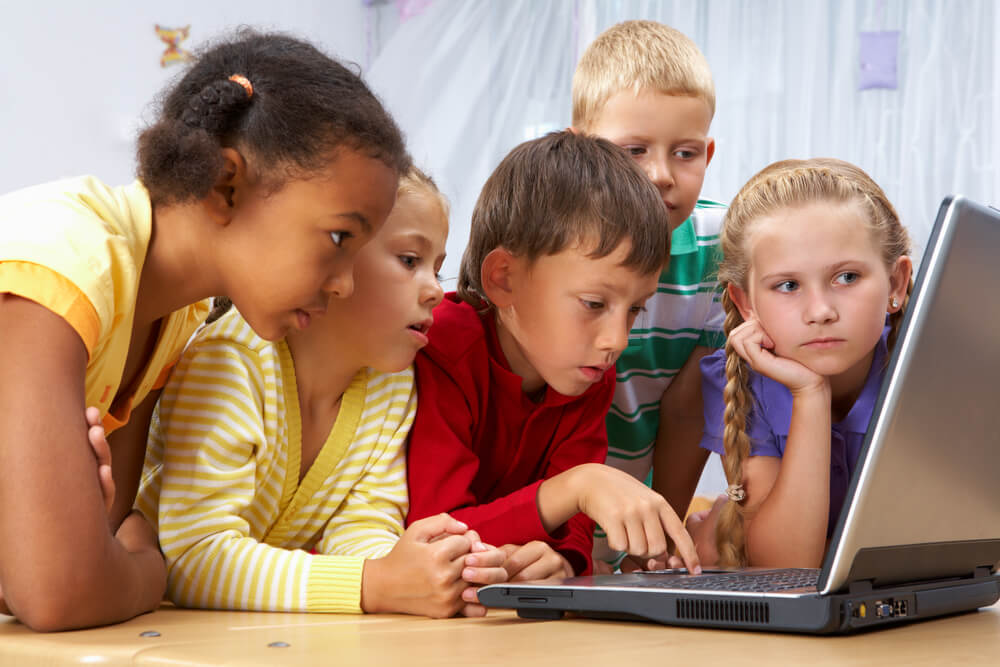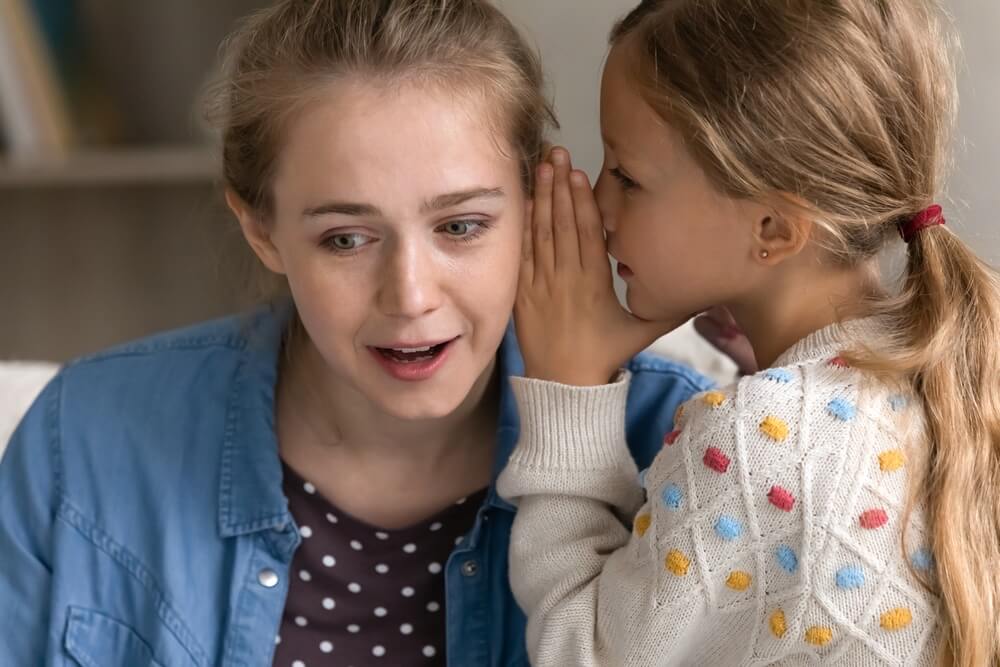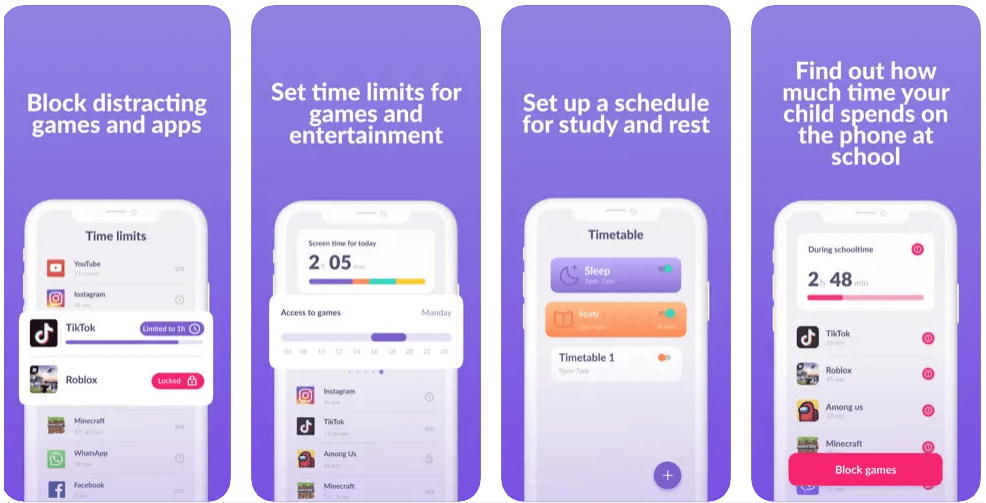What is Netiquette? A Guide to Teaching Online Etiquette to Your Kids

Whether you’ve heard the phrase or not, you doubtless are using netiquette every day in the course of your online communications and activities. It’s really important that kids learn about proper behavior online, too, and you can start teaching them the basics as soon as they begin using the internet to interact with friends and family members. Below, we’re going to take a deep dive into the question ‘What is netiquette?’ and take you through the netiquette rules your kids need to know.
Contents:
- What is Netiquette?
- The Importance of Practicing Netiquette And Why it’s Vital for Kids to Learn
- Main Netiquette Rules Kids Need to Learn
- Additional Netiquette and Online Safety Rules for Kids
- FAQ
- Why It’s Vital to Teach Your Child the Skill of Netiquette
What is Netiquette?

fizkes/Shutterstock.com
The term ‘netiquette’ refers to the acceptable or correct way of communicating on the internet and of general online behavior. Basically, it’s the etiquette on the internet and is intended to help ensure online communication is respectful and appropriate.
It’s important to note, however, that while there are some general netiquette rules, there are likely to be variances across different platforms. For example, allowable rules of behavior may be stricter on some websites than others—such as on sites designed specifically for kids.
The Importance of Practicing Netiquette And Why it’s Vital for Kids to Learn
As a set of social conventions designed to help smooth online interactions, not following proper netiquette can cause many problems. The most obvious example is when someone is unintentionally insulted simply because another user didn’t follow the rules of good online etiquette. This could happen if, say, a message was sent from one person to another in which the whole text was written in capitals. The use of capitals in a message indicates that the sender is shouting and could cause offense. But perhaps the sender simply didn’t realize this and therefore broke a basic rule of net etiquette without even realizing they were doing so.
The rules of netiquette are slippery, and, as adults, we often follow them instinctively. However, this aspect of the online world can be really tricky for kids to navigate, and it’s crucial to give them guidance to ensure their internet experiences are as safe and happy as possible.
Main Netiquette Rules Kids Need to Learn

YanLev Alexey/Shutterstock.com
Take a Moment to Think Before You Type
It’s easy for anyone—and especially kids—to get so caught up in what they want to say or their ideas that they type without considering whether their words will be read in the way they mean them to be. Teaching kids to take a moment to think before they type (especially if they’re feeling annoyed or excited) is one of the most important tips you can give them regarding internet etiquette.
Conduct Yourself Online as You Would in the Real World
Another key element of online etiquette is making sure that, just because you’re online, you don’t act in a way that you wouldn’t in the real world. For adults in the workplace, examples would include the use of professional (rather than informal) language when composing emails and following the specific company policy regarding online activity.
Teach your kids that they need to use the same manners and conduct themselves with the same politeness as they would if they were encountering users offline. It’s important to explain to children that, without the benefit of being able to hear the tone of voice or see body language, it’s easy for messages, comments, or reactions to come across in an unintended way and cause hurt or upset.
Respect the Privacy of Others
It’s crucial that kids understand how important privacy is online—both their own and that of other people. Users should never upload or share videos or images of others unless they’ve first checked and gotten the green light from the individual concerned. Proper etiquette online also means never pressuring or pushing another online user to share personal information if they’re not comfortable doing so.
When it comes to examples of netiquette, this also makes for a good opportunity to chat with your child about online safety. Respecting others’ privacy goes both ways, so speak with your kid about how it’s crucial that their own privacy is respected too: caution your child about never imparting personal details to those they don’t know and trust.
as part of helping your child stay safe online, a parental control app like Kids360 is a great option, allowing you to block certain apps, check how long your child is spending on various online platforms, and set screen limit times.

Kids360 app
Avoid Plagiarism
The definition of plagiarism is the taking of someone else’s ideas or work and passing it off as your own. While this may be a little tricky to explain to very young children, older kids—as school students—need to know how important it is to avoid plagiarism to avoid running into trouble with their academic work, now or in the future.
There are lots of ways to avoid plagiarism. Firstly, always reference any sources or source materials used, and include quotation marks and a citation if you’re directly quoting from a source. Instead of quoting, demonstrate to your child how to paraphrase, in order to present the information in a new way—and of course, if possible, it’s even better to come up with original ideas!
Finally, many people use an online plagiarism checker tool to ensure they haven’t inadvertently committed this netiquette faux-pas before submitting their work.
Before Asking a Question, Research
Even for adults, it can be easy to fall foul of this guideline! The basic idea of this rule of netiquette is to make sure the answer isn’t already easily available online before asking your forum, network, or platform community a question. This could mean checking the FAQ page of a specific website carefully, looking through an online guideline manual, reading the discussion thread, or simply spending some time doing a little Googling.
For older kids and teens, show them the basics of good practice when it comes to research and how to ascertain whether the information they pull up online is reliable.
Check Your Spelling and Grammar
Just as for adults, it’s good to instill in kids the importance of trying their best to ensure their grammar, spelling, and punctuation are correct when communicating online. As well as helping to make sure there’s no chance of a misunderstanding, this is also useful to the reader, for them to better comprehend what’s being put across.

oatawa/Shutterstock.com
Respect Others’ Time—and Bandwidth
Good netiquette means being aware that other people have busy lives (and limited bandwidth), and therefore ensuring that messages are concise and to the point. It also entails checking with someone before sending them a particularly large attachment or a message that contains a link they’ll need to click on to open.
Be Forgiving and Gracious
Just as in the real world, it’s really important to remember that people make mistakes from time to time, including ourselves, and not to be harsh to those who slip up. Those who are new to a forum, group, or another platform, especially, may simply still be learning the ropes, so pointing out small errors is usually unnecessary.
In cases where you feel the person could use a helping hand or a pointer in the right direction, it’s probably best to send a private message rather than communicate this to the whole group.
Dealing with Hate Speech
What’s the netiquette if you or your child encounter hate speech online— either directed at yourself, or someone else or put out there in general? It’s important that your child knows to speak with you if anything happens online that makes them feel uneasy or upset.
When it comes to hate speech, it’s a good idea to report the incident to the relevant website provider—it should subsequently be removed from the platform. Hate speech is illegal, and therefore the website provider has an obligation to take such content down within twenty-four hours of its being reported.
Reading the Room
As we mentioned at the top, the rules of netiquette may flex, depending on the online platform or website. For example, light-hearted banter between forum members might not be appreciated in a serious discussion group dedicated to serious philosophical issues of the day.
Know Your Emojis
Emojis can be a perfect example of how communication misunderstandings can happen in cyberspace. Good netiquette means following certain social conventions when it comes to using emojis as much as it does with standard text messaging. But this can be a minefield. For example, the grinning emoji and the grimacing emoji look very, very similar—and yet using them imparts a completely different reaction. And then there’s when to use emojis, such as the one with hearts for eyes or blowing a kiss—could this give the recipient the wrong idea?
For kids, simply remind them that it’s about communicating with someone online in the same way as they would in the real world.
Related: A Guide to Emoji Slang
Additional Netiquette and Online Safety Rules for Kids

fizkes/Shutterstock.com
Children—and especially younger kids—will need additional rules and boundaries to keep them safe online, and it’s vital that they understand what these are.
Safeguarding Privacy
As a parent, making sure your child doesn’t share personal information online with non-friends or family members is of the utmost importance. As well as keeping their name, address, and telephone number private, kids should also be taught not to share details such as the school or outside clubs they attend.
You can also help keep your child safe by ensuring they use a neutral nickname in chatrooms so that strangers aren’t given a clue about their identity and/or location.
Netiquette and Bots
Sometimes, good netiquette is not adhering to the rules of netiquette! It’s the case with bots, which can lurk on some social media platforms, commenting on users’ posts and even creating their own. It’s definitely not against the rules of internet etiquette for your child to ignore these bots and any comments or requests they may make.
Be Inclusive
Forums set up that include a group of classmates or friends, or even an entire class, can cause problems, especially if some kids get excluded from the group or if comments are made that result in hurt to some participants—even if this was unintentional.
To help avoid this, teach your child how important it is to be tolerant, respectful, polite, and helpful in a private chat group or forum: this embodies netiquette at its best.
Avoid Strangers
Another example where the general rules of netiquette can be discarded: let your child know that they shouldn’t accept a friend request or add someone on social media or another platform that they don’t know. It’s also important that they understand not to open a message or attachment from a stranger either—it could contain inappropriate content or harbor a virus.
Download the Kids360 app right now to make sure your kid is safe online!

Vadym Pastukh/Shutterstock.com
Don’t Get Involved in Flame Wars
Teaching your child the value of sharing their opinions positively and the importance of healthy debate is great—but they also may need guidance to avoid getting embroiled in a long-lasting online flame war. These heated discussions can easily escalate and get out of hand, and, with tempers at boiling point, things can be said that are later regretted.
Help your children to understand that it’s best to steer clear of a flame war—and, should they happen to find themselves caught up in one—to get away from the situation as soon as possible.
What Goes Online is Forever
It’s a good idea for us all to remember, in our online communications and activities, that what we post online stays in the digital world forever, and can catch up with us at a later date. It’s crucial that children understand the potential permanence of their actions online—and to this end only type what they’d be happy to say in person, and only in connection with those they know and trust.
FAQ

Julija Sulkovska/Shutterstock.com
What are the 5 netiquette rules?
The five main rules of netiquette to teach your child if they use a computer or other device are:
- Take a moment to think before typing.
- Conduct yourself online as you would in the real world.
- Respect the privacy of others.
- Avoid plagiarism.
- Before asking a question, research.
These rules of internet etiquette will help ensure they have a happier, safer online experience and don’t risk causing hurt to others.
Read more How Digital Wellbeing and Parental Controls Ensure Online Safety for Kids.
What is the main purpose of netiquette?
The key reason for netiquette is that its use can help promote smoother communication and avoid misunderstandings online.
Why is netiquette important for children?
While it may be a tricky subject to teach kids, it’s vital they learn good online etiquette—think of it as a life skill. Netiquette can be hard for adults to get right, and children can be at even greater risk of, for example, expressing an opinion that may be misunderstood.
Why It’s Vital to Teach Your Child the Skill of Netiquette
Learning proper netiquette is a life skill, just as etiquette is in the real world. One of the basic tenets of good online etiquette is to always remember that, when online, you’re communicating with real people—not just a computer or device. Helping your child to understand this fundamental concept can prevent adverse or unintended consequences.
Hopefully, the guide above will help you teach your kid about netiquette and deploy good internet etiquette in all their online interactions. There are bound to be slip-ups; after all, even adults regularly fall foul of netiquette, so if this happens, be sure to explain the mistake, why it matters, and how your child can avoid it in the future.
We’d love to know your views on netiquette—are there any additional rules that, as a family, you adhere to online other than the ones we’ve listed above? Drop us a line to let us know your own personal run-down of the most important rules of netiquette and why they’re so useful.
The picture on the front page: Pressmaster/Shutterstock.com
Проверьте электронный ящик



















